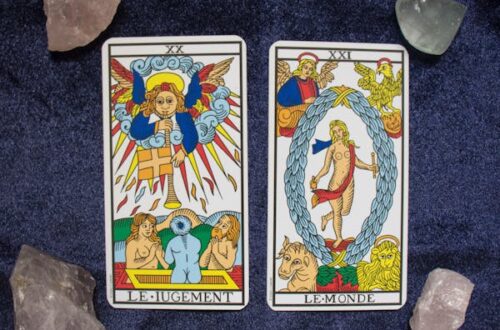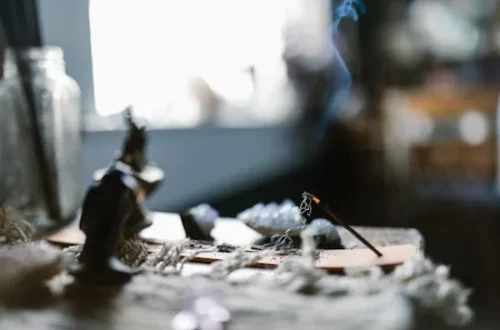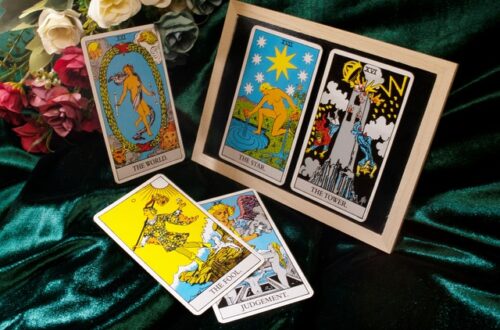
Using Tarot for dream interpretation
Table of Contents
Using Tarot for Dream Interpretation
Dreams have fascinated humanity for centuries. They serve as a gateway to the unconscious mind, revealing our hidden thoughts, emotions, and desires. One fascinating approach to understanding dreams is through the use of Tarot cards. This ancient divination system can provide insights into our dreams and help us decipher their meaning. In this article, we will explore how to use Tarot for dream interpretation, examining techniques, spreads, and the significance of various cards in the context of dreams.
The Connection Between Dreams and Tarot
The relationship between dreams and Tarot lies in their shared connection to the subconscious. Both serve as tools for self-exploration and reflection. Dreams often present symbols and narratives that are deeply personal. Similarly, Tarot cards are rich in symbolism, representing various aspects of the human experience. When combined, they can offer profound insights into our inner world.
Understanding the Symbolism of Tarot Cards
Each Tarot card carries unique symbols and meanings. Understanding these meanings is essential for interpreting dreams effectively. The Major Arcana cards, for instance, represent significant life themes and spiritual lessons. In contrast, the Minor Arcana cards focus on daily experiences and challenges. Familiarizing yourself with these symbols will enhance your ability to connect your dreams with Tarot.
The Major Arcana
The Major Arcana consists of 22 cards, each representing a powerful archetype. For example, The Fool symbolizes new beginnings, while The Tower signifies upheaval and revelation. When interpreting dreams, consider which Major Arcana cards resonate with your dream’s themes. If you dream of a journey, for instance, The Chariot may hold significance, indicating triumph over obstacles.
The Minor Arcana
The Minor Arcana is divided into four suits: Cups, Pentacles, Swords, and Wands. Each suit corresponds to different aspects of life. Cups relate to emotions and relationships, Pentacles focus on material aspects, Swords symbolize intellect and conflict, while Wands represent creativity and action. Recognizing the suit of a card can provide context to your dream. For instance, if you dream of an argument, a Sword card might reflect your mental struggles.
Preparing for Dream Interpretation
To use Tarot for dream interpretation, it is important to create a conducive environment. Begin by setting aside time and space for reflection. Ensure that you are free from distractions. You may also wish to keep a dream journal. Recording your dreams immediately upon waking helps preserve details that may fade throughout the day. This practice enhances your connection to the dream’s messages.
Choosing a Tarot Deck
Choosing a Tarot deck that resonates with you is crucial. There are countless decks available, each with its unique artwork and symbolism. When selecting a deck, consider your personal connection to the imagery. A deck that inspires you will enhance your interpretation process. Popular choices include the Rider-Waite-Smith deck, known for its clear imagery, and the Thoth deck, which offers a more esoteric approach.
Creating a Sacred Space
Before beginning your interpretation, create a sacred space. This can be as simple as lighting a candle, burning incense, or playing soft music. Establishing a ritual helps to focus your energy and intentions. This intentional environment allows for deeper insights. You may also wish to meditate briefly to clear your mind and center yourself before engaging with your Tarot cards.
Techniques for Using Tarot in Dream Interpretation
There are various techniques to incorporate Tarot into dream interpretation. These methods can provide clarity and enhance understanding. Below, we explore a few effective techniques.
1. Direct Card Draw
One straightforward method is the direct card draw. After recording your dream, shuffle your Tarot deck while focusing on the dream’s central theme. Draw one to three cards to reveal insights. Each card should be examined in relation to the dream. Consider how the imagery and symbolism connect to the dream’s narrative. For example, if you dream about being chased, you might draw The Devil card, indicating feelings of being trapped or overwhelmed by fears. This technique allows for a direct conversation with your unconscious mind.
2. The Dream Spread
Creating a specific Tarot spread for dream interpretation can yield profound insights. A simple three-card spread may include the following positions:
- Card 1: Represents the dream’s primary theme.
- Card 2: Reveals underlying emotions or fears.
- Card 3: Suggests actions or outcomes based on the dream.
This structured approach helps clarify the dream’s messages and encourages deeper reflection on its implications. For instance, if you dream of falling, drawing The Tower in the first position may indicate a sudden upheaval in your life, while The Two of Cups in the second position could reveal underlying feelings of connection and support from others.
3. Journaling Your Interpretations
Keeping a Tarot dream journal is an invaluable tool for tracking patterns and themes over time. After drawing cards and interpreting them, write down your insights. Reflect on how the cards relate to your dreams and any patterns that emerge. Over time, this practice reveals how your subconscious communicates through both dreams and Tarot, fostering a deeper understanding of yourself. For example, if you consistently draw The Moon after dreams of confusion, it may suggest a recurring theme of uncertainty in your life that requires your attention.
Interpreting Specific Cards in Dreams
Understanding how specific Tarot cards relate to dreams can enhance interpretation. Here are some key cards and their potential meanings in the context of dreams.
The Lovers
The Lovers card often indicates themes of love and relationships. In a dream context, this card may suggest a need for connection or an evaluation of romantic partnerships. For instance, if you dream about a decision regarding two potential partners, drawing The Lovers can signify the importance of choice and commitment in your waking life. This card invites you to explore your values and desires in love.
The Hermit
The Hermit symbolizes introspection and solitude. Dreaming of this card may indicate a period of self-reflection or a need for solitude to gain clarity. If you find yourself dreaming of seeking guidance from a wise old figure, drawing The Hermit may suggest that you need to look inward for answers. This card encourages you to seek inner wisdom and trust your intuition, highlighting the importance of taking time for self-exploration.
The Wheel of Fortune
The Wheel of Fortune represents cycles and change. If this card appears in your dreams, it may signify a turning point or significant life changes ahead. For example, if you dream of a wheel spinning, drawing The Wheel of Fortune can indicate that you are at a crossroads, where your choices will significantly impact your future. Embrace this card’s message by remaining open to new possibilities and trusting the flow of life.
Real-Life Examples of Tarot and Dream Interpretation
To illustrate the effectiveness of using Tarot for dream interpretation, let’s explore a few real-life examples. These cases demonstrate how individuals have successfully integrated Tarot into their understanding of dreams.
Case Study 1: The Dream of Flight
A woman named Sarah frequently dreamed of flying. In her dreams, she felt liberated and empowered, soaring high above landscapes. Intrigued by these dreams, she drew three Tarot cards. The cards drawn were The Fool, The Star, and The World. Each card held significant meaning:
- The Fool: Representing new beginnings and adventure, reflecting her desire for freedom.
- The Star: Symbolizing hope and inspiration, indicating her aspirations for the future.
- The World: Signifying completion and fulfillment, suggesting that she was on the right path towards achieving her dreams.
Through this interpretation, Sarah realized that her dreams of flying represented her desire to break free from her current circumstances and pursue her passions. This insight motivated her to explore new opportunities in her career.
Case Study 2: The Recurring Nightmare
Another example involves a man named John, who had recurring nightmares of being chased. These dreams left him feeling anxious and unsettled. He decided to use Tarot to gain insight into the underlying fears. He drew three cards: The Devil, The Nine of Swords, and The Hanged Man. The interpretations revealed significant insights:
- The Devil: Indicating feelings of entrapment and fear.
- The Nine of Swords: Representing anxiety and sleepless nights, suggesting that John was overwhelmed by his thoughts.
- The Hanged Man: Signifying a need to surrender and gain a new perspective on his situation.
From this reading, John understood that his nightmares were manifestations of his anxiety and unresolved fears. He realized that he needed to confront these issues and seek support, leading him to take positive steps towards addressing his mental health.
Case Study 3: The Dream of Abundance
A woman named Emily often dreamed of overflowing baskets of fruit. These dreams brought her feelings of joy and abundance. Curious about their meaning, she consulted Tarot and drew three cards: The Empress, The Ace of Pentacles, and The Ten of Cups. The meanings were illuminating:
- The Empress: Symbolizing fertility, creativity, and nurturing energy.
- The Ace of Pentacles: Representing new opportunities and financial growth.
- The Ten of Cups: Indicating happiness and emotional fulfillment in relationships.
Through her Tarot reading, Emily realized that her dreams of abundance reflected her desire for creativity and personal growth. The cards encouraged her to embrace new opportunities in her career and foster meaningful connections in her relationships. This newfound clarity inspired her to pursue artistic endeavors she had previously neglected.
Conclusion
Using Tarot for dream interpretation can be a powerful tool for self-discovery and understanding. By tapping into the rich symbolism of the Tarot, you can uncover hidden messages from your dreams. Whether through direct card draws, spreads, or journaling, these practices offer insight into your unconscious mind. As you explore your dreams and Tarot together, remember that each reading is a personal journey. Embrace the messages that arise, and let them guide you toward greater self-awareness and growth.
Bibliography
- Greer, Mary K. The Complete Book of Tarot Reversals. Llewellyn Publications, 2002. ISBN: 978-0738701430.
- Pollack, Rachel. 78 Degrees of Wisdom: A Tarot Journey to Self-Awareness. Weiser Books, 1980. ISBN: 978-0877283606.
- DuQuette, Lon Milo. The Key to Tarot. Llewellyn Publications, 2004. ISBN: 978-0738703083.
- Varriale, Michael. The Tarot: A Key to the Secret World. Aeon Books, 2010. ISBN: 978-1906830105.
- Campbell, Joseph. The Hero with a Thousand Faces. Princeton University Press, 2008. ISBN: 978-0691017846.




